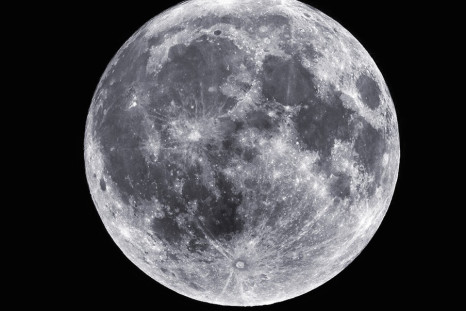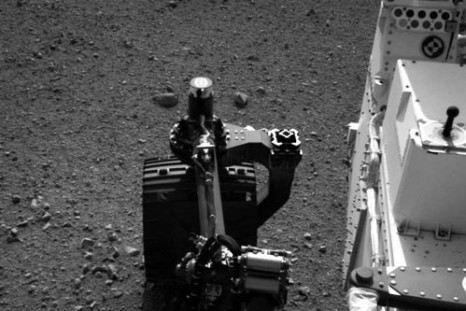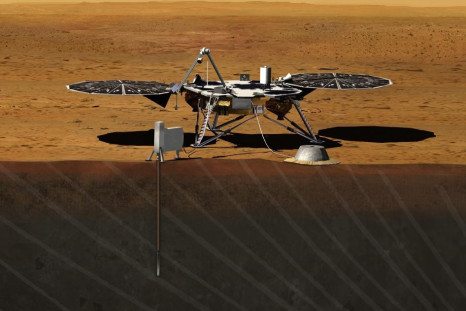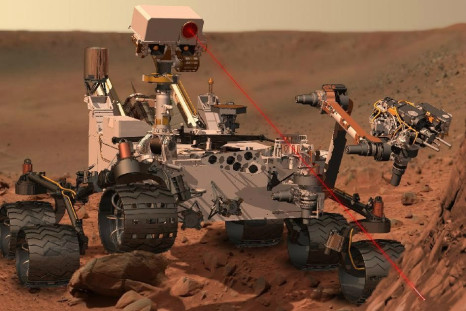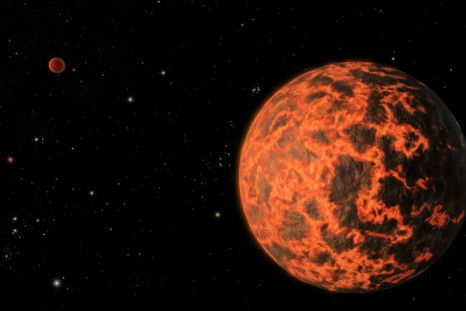Home
> NASA
NASA
Curiosity Suggests Water on Mars: NASA’s Previous Expeditions to Mars [SLIDESHOW]
Start the slideshow to know about major past Mars missions suggesting evidence of water on the Martian surface.
Sanskrity Sinha Oct 03, 2012
Mars Curiosity Finds Ancient Rivers on Mars, Suggesting Life May Have Existed [PICTURES]
Groups of pebbles, rounded by water, found by roving explorer vehicle.
Dominic Gover Sep 28, 2012
Hubble Travels 13 Billion Years Back in Time for Universe Image
Latest pictures comprise 2,000 separate shots, taken over 10 years.
Dominic Gover Sep 26, 2012
Apple, Google and NASA Employees Compromised as IEEE Exposes 100,000 Passwords
IEEE has found to have exposed 100,000 user passwords publicly for over a month.
Alistair Charlton Sep 26, 2012
Autumnal Equinox 2012 Brings First Day of Autumn across Northern Hemisphere
The first day of autumn arrived across the northern hemisphere on 22 September, heralding the end of one of the hottest summers since records began.
Sanskrity Sinha Sep 22, 2012
Soyuz Space Capsule Lands in Kazakh Steppes [SLIDESHOW]
Russian spacecraft, with three astronauts on board, lands safely after 123 days in space.
Umberto Bacchi Sep 17, 2012
Two Unique Jupiter-like Planets Found in Star Cluster
Discovery points to more and more planets that can thrive in diverse and extreme environments.
Staff Reporter Sep 17, 2012
Neil Armstrong, First Man on Moon, Buried at Sea [PHOTOS + VIDEO]
Ashes of Neil Armstrong scattered in the Atlantic Ocean amid glowing tributes.
Staff Reporter Sep 15, 2012
Solar Filament Creates Northern Lights over Canadian Sky [PHOTOS]
Beautiful swirls of green and red lights appeared in the sky over Whitehorse, a town in the Canadian territory of Yukon, on the night of 3 September, as a solar filament glanced off the Earth's magnetic environment
Sanskrity Sinha Sep 06, 2012
Neil Armstrong Funeral: Hundreds Pay Tribute to Reluctant Hero [SLIDESHOW]
Neil Armstrong's fellow astronauts Buzz Aldrin and Michael Collins attend funeral service along with other friends and family members.
Geetha Pillai Sep 01, 2012
NASA Finds Evidence of Water On The Moon
Orbital space probes detect presence of hydrogen and ice at planet's dark south pole.
Staff Reporter Sep 01, 2012
Nasa’s Wise Discovers Millions of Black Holes Across Universe
Dust-covered galaxies quite bright but can be viewed only using infrared telescopes.
Staff Reporter Aug 30, 2012
Nasa Scientists Find Multiple Transiting Planets Orbiting Two Suns [STUNNING PHOTOS]
In scientists' quest for habitable planets, they see more opportunities for life to exist.
Staff Reporter Aug 30, 2012
Hurricane Isaac Weakens as New Orleans Braces for Impact
Defence strategies currently working well, but danger isn't over for Louisiana's largest city.
Umberto Bacchi Aug 29, 2012
Arctic Sea Ice Drastically Declines, the Sharpest in Years
13 percent decline per decade recorded over last 30 years.
Staff Reporter Aug 28, 2012
Tropical Storm Isaac: Emergency in Louisiana, US Southern States on High Alert
Isaac moving towards New Orleans and expected to make landfall and flood northern Gulf Coast with waves up to 3 metres high.
Geetha Pillai Aug 28, 2012
Mars Curiosity Rover Wiggles Wheels Before First Test Drive
Nasa Rover will drive several metres from landing site as tests continue before starting on search for life.
Nicholas Edmondson Aug 22, 2012
Geek Speak: Why Big Bang Theory is Universally Awesome [BLOG]
With record ratings, The Big Bang Theory should please nerds and normals alike, says Lianna Brinded.
Lianna Brinded Aug 22, 2012
Nasa to Launch Another Mission to Probe Interior of Mars [VIDEO]
Aim of mission is to find out why evolution of Mars was different from earth's.
Staff Reporter Aug 21, 2012
Phoenix Cluster Sets New Cosmic Record, Produces 740 New Stars a Year
International team of scientists discover unique galaxy cluster, SPT-CLJ2344-4243 or the Phoenix cluster, that churns out 740 new stars every year.
Akshaya B S Aug 17, 2012
Hypersonic 4,500mph Waverider Aircraft Can Fly from New York to London in One Hour
US Air Force, Boeing and Nasa to test engine that can travel five times speed of sound.
Nicholas Edmondson Aug 13, 2012
IBTimes Business Podcast: 'The Send the Bankers to Mars' Edition
IBTimes Business journalists Lianna Brinded, Shane Croucher and Martin Baccardax run through the big stories of the week in this latest edition of the Business Podcast.
Martin Baccardax Aug 10, 2012
Mars Mission: Nasa's Curiosity Rover Comes Under 'Paparazzi' [PHOTOS/VIDEO]
Curiosity rover sends low-resolution images of Mars surface, hours after its safe landing.
Vasudevan Sridharan Aug 07, 2012
Why the Mars Rover Curiosity is Worth Every Penny [BLOG]
With the Mars rover Curiosity revealing the phenomenal scientific and technological feats that humans can achieve, physicist Donald Sinclair slams naysayers and explains why the monumental expedition is worth every single penny
Donald Sinclair Aug 07, 2012
First Intragalactic Tweets from #Mars [SLIDESHOW]
Nasa's Space Robot Curiosity sends Tweets from Mars.
Umberto Bacchi Aug 06, 2012
Mars Mission Kicks Off, Curiosity Rover Lands on Red Planet [FIRST PICTURES]
In one of Nasa's most ambitious missions, Curiosity rover makes touchdown on the Red Planet.
Vasudevan Sridharan Aug 06, 2012
Greenland Ice Sheet Melts at Alarming Pace
Scientists believe that the extreme ice melts could have occurred due to an unusually strong ridge of warm air or a heat dome over Greenland.
Staff Reporter Jul 25, 2012
Sally Ride, America's First Female Astronaut, Dies Aged 61 [VIDEO]
Ride joined Nasa in 1978 and made history by taking part in 1983 Challenger mission.
Akshaya B S Jul 24, 2012
Nasa's HiC Telescope Captures Stunning Images of Sun's Corona [VIDEO]
Images will help scientists understand more about the solar atmosphere and its impact on the earth's space environment.
Staff Reporter Jul 21, 2012
Tiny Exoplanet Discovered Close To Earth's Solar System
UCF-1.01 is located 33 light years away from earth, using Spitzer Telescope.
Staff Reporter Jul 19, 2012
Pages
- PREV
- 49
- 50
- 51
- 52
- 53
- 54
- 55
- 56
- 57
- NEXT












